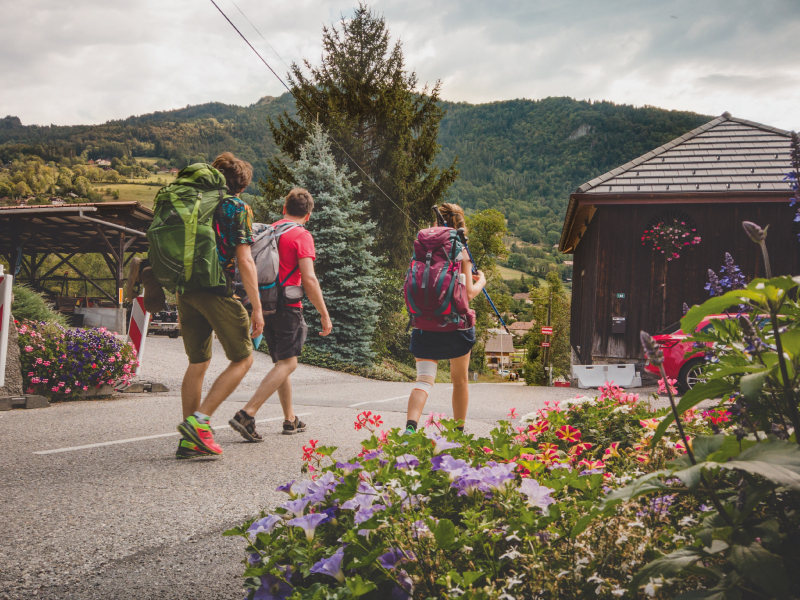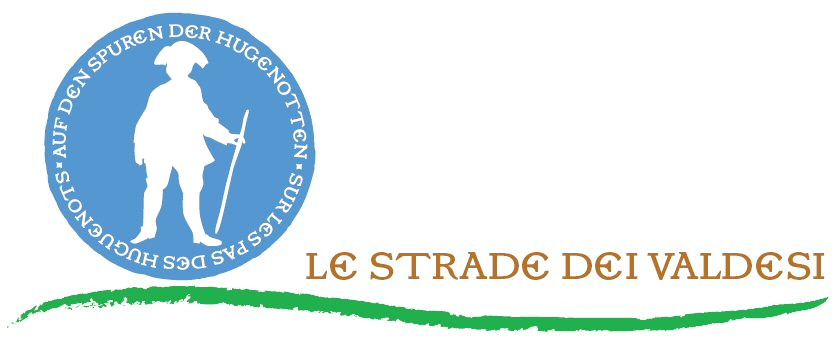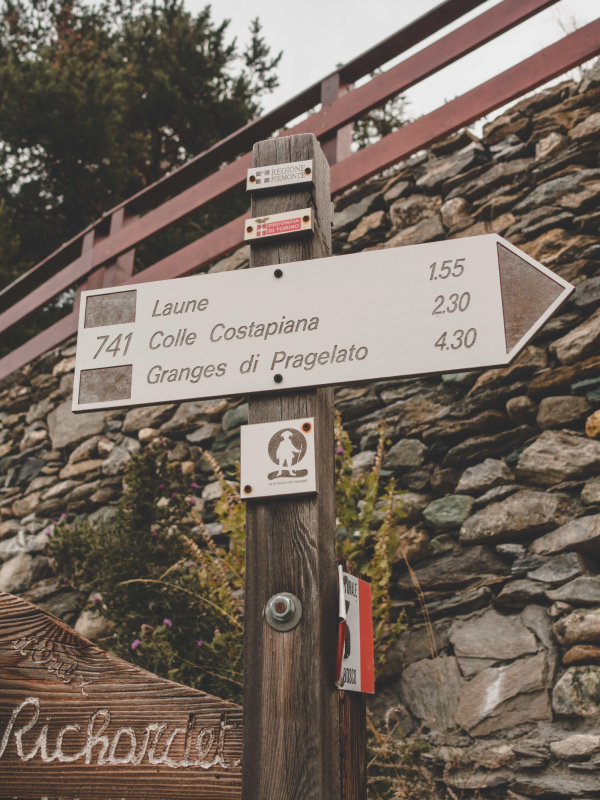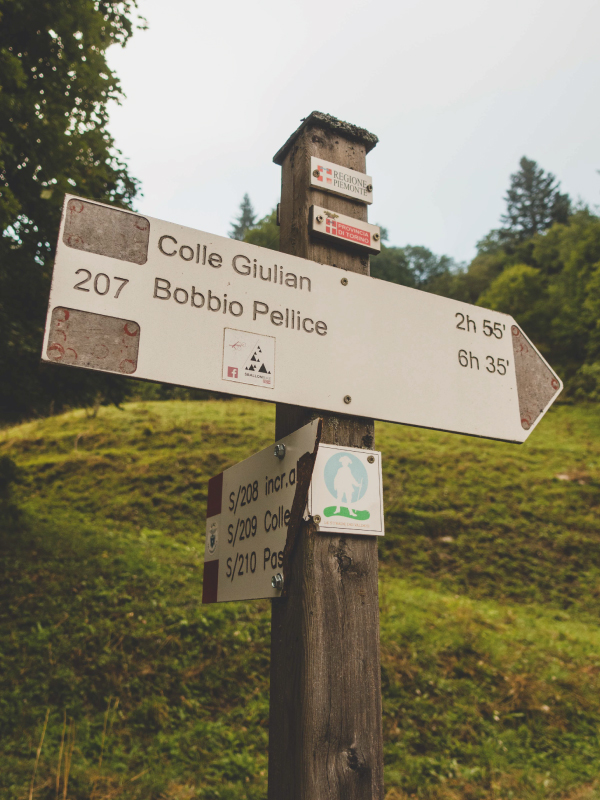European heritage worth safeguarding
The Foundation
The Waldensian Foundation & Cultural Centre is a private, not for profit institution created in 1989 by the “Tavola Valdese” and the “Society of Waldensian Studies”. Registered as a Foundation in 1991, it was legally recognised by the Piedmont Region in 1992.
Its purpose is:
-
- to preserve and enhance the available to the public Library; the book funds; the Waldensian Historical Museum and the Museum of the Waldensian Valleys, as well as all the other archival funds, books and museums that are entrusted to it by private individuals, public or private bodies;
- to contribute to the development and diffusion of studies and reflection of a theological, cultural and historical nature by the Evangelical Churches, in particular the Waldensian ones, also in collaboration with other Italian and foreign bodies, by means of conferences, conventions, debates, exhibitions, publications and any other appropriate form;
- to contribute to the protection of the specific characteristics of the Waldensian community from both a religious and cultural point of view, within a framework for the advocation of minority groups in a European perspective;
- to promote and make available to the public, the historical and documentary heritage it has collected.
Located in Torre Pellice, in the heart of the Waldensian Valleys, the Waldensian Foundation and Cultural Centre is situated in the border area between Italy and France, and in the context of ‘a European reality under construction’. It aims to be a place of meeting and comparison in the spirit of cultural pluralism.
In carrying out its work, the Foundation addresses the following:
-
- the surrounding territory;
- the Italian reality;
- the Protestant and Evangelical Churches in Italy and abroad.

A European Cultural Itinerary
The network of Waldensian and Huguenot Routes were certified as a “Council of Europe Cultural Route”, in 2013.
The Values of the Council of Europe
This hiking trail aims to highlight the historical exile of Huguenots and Waldensians and their gradual integration into their host countries as an important part of our common European history and heritage. It also focuses on the importance of freedom, respect for human rights, tolerance and solidarity as indispensable values for Europe.
A Brief History
“The Waldensian and Huguenot Roads” is a 2000 km long European cultural itinerary which traces the history of the exile of the Waldensians and Huguenots (French Reformed), who in the 1680s were forced to flee from the Waldensian Valleys and from France because of religious persecution. Having been welcomed as refugees in Switzerland and northern Europe after their escape, in 1689 the Waldensians returned to their valleys and regained the right to live there while maintaining their religious denomination.
Travelling today
Today this story of exile starts from Poët Laval in France, and Saluzzo in Italy and extends, via Switzerland (the routes from France and Italy meet in Geneva), to Baden-Württemberg and then Hesse in Germany. Along the way, the Waldensians and Huguenots founded various settlements which are rich hubs cultural heritage, although it cannot be forgotten that they also serve as a modern reminder of the existence of religious persecution, displacement, migration and integration.
For the part of the route linked to the Glorious Repatriation, the itinerary starts in Geneva, and after crossing several Alpine valleys, arrives in Bobbio Pellice – a place which is also the starting point of the initial round-ups and imprisonment of the Waldensians – events which date back to 1686 and which preceded the exile and the Repatriation.
The itinerary includes many cultural and historical attractions, as well as being astonishingly beautiful in parts. Travellers who take the route will experience a wide variety of European culture, discover a shared history, and enjoy convivial moments based on the acceptance of others, while continuing to develop a sense of self-awareness.
The round-ups and imprisonments
In February 1686 Vittorio Amedeo II of Savoy, urged on by the French king Louis XIV, decided to “solve the problem of the Waldensians’, who were to be found living in Italy, as well as France.
The Waldensians, for their part, gathered in the valleys to the south west of Turin to discuss the matter, and in an assembly, they decided to resist. But it was futile, given the enormously superior forces of the French and Piedmontese which were rallied against them.
As the violence spread, the war became one of round-ups and reprisals . The Duke promised a prize of 43 lire and 10 soldi to every bearer of a Waldensian head in Luserna. Cruelty passed from house to house, and no village in the valleys was not involved .
In the end the toll of the war was terrible: more than 1,600 Waldensians died and about 12,000 people were locked up in a total of14 Piedmontese prisons (Luserna Alta, Forte di Torre Pellice, Saluzzo, Revello, Carmagnola, Cherasco, Mondovì, Fossano, Bene, Villafalletto, Asti, Chivasso, Ivrea, Trino, Verrua, Vercelli).
From the diary of a prisoner
There remain very few direct testimonies of the events in Waldensian Valleys of April and May 1686. Most of those involved didn’t have the time to write memoirs. Bartolomeo Salvagiot, did however – having escaped the disaster, and survived deportation and imprisonment – he was exiled to Brandenburg . His memoirs, written in Germany, recount the drama experienced by the Waldensian population from 23rd April 1686, when military operations began. Bartolomeo found himself in the Pellice valley and tried to escape to Rorà, but the widespread looting had deprived the people of everything they needed to survive. Without sustenance he gave himself up to the ducal troops and was imprisoned in the convent of Luserna. His wife and daughters were in Villar Pellice, and he tried to make contact with them. hey joined him after ten days and were also imprisoned. The conditions of detention were terrible. They slept on the floor, …”and blessed was he who could have a stone under his head, both the ministers and the others… And so I remained in prison for 15 days and every day they took our poor people from those mountains and tore the children from their mothers’ arms like rapacious wolves and cried out; but there was no humanity in those people and they hanged many of them at that time…”.
The time for departure comes. The men are tied two by two, .. “and as they came out of the gate of Luserna there was a great multitude who looked and said many blasphemies and said: ‘go go heretics, race of the devil, and look at your mountains once more and never again’. And so we went among those soldiers, like poor sheep among wolves.”
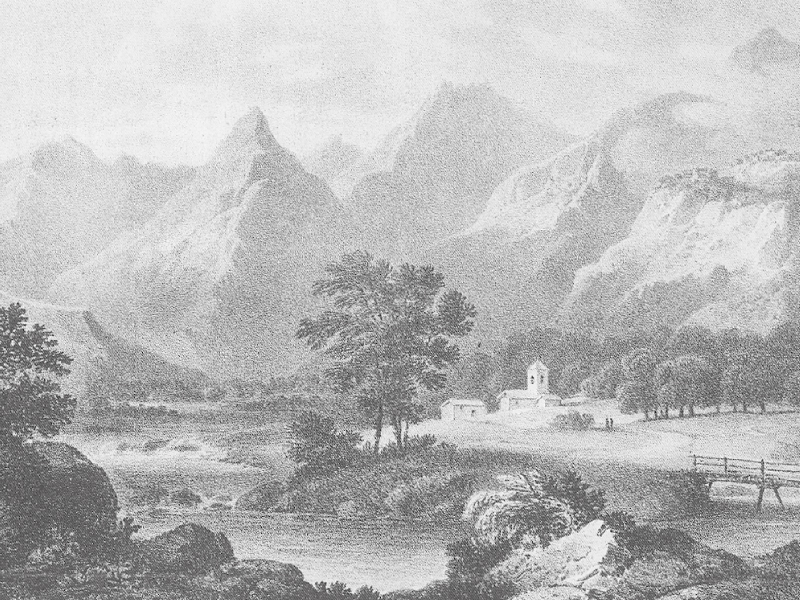
Exile
During the internment of the Waldensians in the Piedmontese prisons, the European protestant powers did not cease to plead their case to Duke of Savoy in order to obtain, ‘for the brethren in faith’, an agreement that would at least allow their physical survival.
In particular, the protestant cantons of Switzerland did their utmost, proposing on 17th October 1686 the release of the Waldensians and Swiss hospitality for them for a limited time while awaiting definitive accommodation in other countries.
Only on November 30th, 1686, did Vittorio Amedeo II declare himself willing to free the prisoners, and on January 3rd, 1687 he issued an edict in which he established, “the perpetual exile for those obstinate in their faith and the confinement of the catholicised in the Vercelli area”. Faced with a choice, the survivors of about 9 months of imprisonment (a little over 3000 faithfull) had to choose between forced exile, or confinement in the Vercelli area (only for the catholics), and 2700 left for exile .
The execution of the edict foresaw, for the ‘obstinate’, a journey through the Susa Valley, over Montcenisio, and through Savoy lands to Geneva. It was an escorted deportation, with the Waldensians divided into 13 brigades, who, accompanied by Savoy soldiers from the various Piedmontese prisons, took 12-16 days to reach their destination. The last contingents arrived in Geneva in February 1687. The journey conditions of were terrible. The healthy men travelled on foot, scantily clad and often barefoot. The women, the few children and the elderly had a few wagons at their disposal, but when they reached Novalesa they lost these too because the road conditions were so bad they could not continue. After the first brigades had crossed the Montcenisio pass, with many losses due to fatigue and the rigours of winter, and under pressure from the Swiss cantons, the exiles were provided with some blankets and mules, but only for the crossing to Lanslebourg, which were then taken back to the other side of the pass for the next wave of arrivals.
“When they arrived at the gates of Geneva they were all in such a sad and deplorable condition that it is impossible to express. Several of these poor people died between the two city gates – they found the end of their lives at the beginning of their freedom. Others were so overwhelmed by sickness and pain that we believed they might die at any moment in the arms of those who had the charity to support them. Some were so frozen with cold that they had no strength to speak, others exhausted under the weight of extreme tiredness, others stood apart from their companions and were not able receive the assistance that was offered them. Most of them were naked and shoeless and bore the marks of extreme poverty so deep that even the most insensitive heart would have pitied them and been penetrated by a lively sorrow…”.
The testimony of a Swiss who rushed to welcome the Waldensian exiles in Geneva
About 2,500 Waldensians arrived in Geneva in January and February 1687. They arrived at different times and were divided into brigades. They were greeted by the people of Geneva, but also by Waldensian exiles such as Henri Arnaud and those of the other brigades who had already arrived and had been cared for and fed…
“One cannot recall”, says Arnaud, “the arrival of the Waldensians in Geneva without abandoning oneself too much to sorrow, although in a certain respect one can say that it was the rarest and most beautiful sight the world has ever seen, especially because of the surprising mix of feelings of joy and bitterness that marked it, since the Waldensians from the first brigade to cross came to meet their relatives who were still alive, or learned of those who had died”.
“The people of Geneva, who were greatly impressed, flocked to these wretched people with the desire to take them to their homes. The Magistrate was obliged to prevent some of the refugees from leaving the city in an attempt to avoid the embarrassment caused by this readiness. Everyone went to those who seemed to be the sickest and most afflicted in order to have the best way of exercising charity”.
There were those who went to the frontier to fetch the newcommers in carts; those who helped the old men and women off their horses; those who held a sick person or carried him in their arms or on their strong shoulders; those who clasped a cold child to their breast and covered him with warm cloths; those who offered bread, wine and refreshments; those who distributed clothes, shoes, caps, cloaks and blankets. The most seriously ill were immediately taken to the hospital in Plain Palais, under the watchful eye of doctors and nurses.
In order to share the burden of care equally among all the people, the city had been divided into districts, which took turns hosting the arriving troops.
Welcomed into their families, the exiles were fed, washed, freed from the worms and lice they had contracted in the long months of filthy captivity, treated for their sores and bruises, and their clothes patched up or renewed. Put to sleep in soft, warm beds.
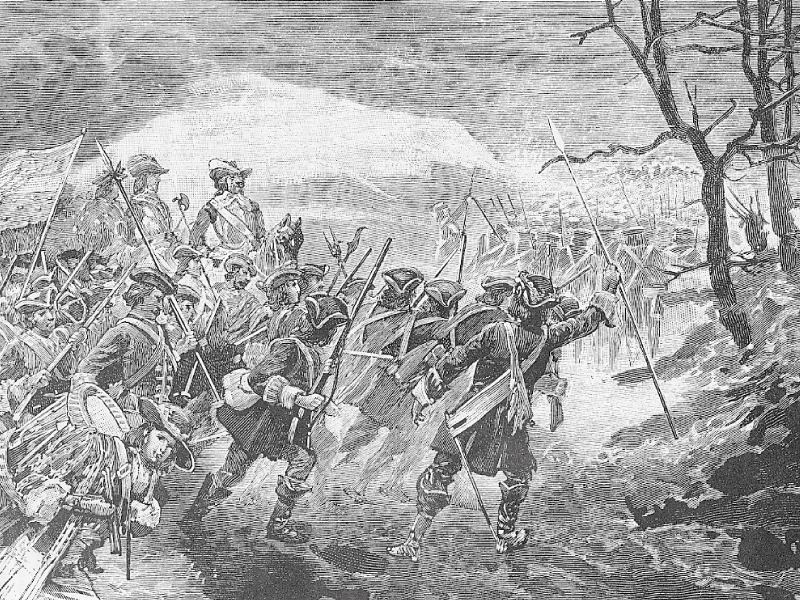
The Glorious Repatriation
Two years later, in August 1689, the international situation turned in favour of the Waldesians. William III of Orange, who had become King of England, put back together the anti-French League of Augsburg, and as part of the campaign against France, financed a military expedition to Piedmont consisting of a thousand men, mostly Waldensians.
In addition, at the end of August a group of about a thousand Waldensian and Huguenot exiles, led by Henri Arnaud (already minister of worship in Pinasca at the time of the expulsion and supporter of the subsequent desperate Waldensian resistance) was persuaded to attempt the risky expedition across the Alps to reach the Piedmontese valleys. The enterprise went down in history as the “Glorieuse Rentrée”, a clear reference to the English “Glorious Revolution” that had indirectly made it possible. In fact, having obtained the political and financial support of Louis XIV’s historic adversary, William III of Orange – recently installed on the English throne as a result of the “Glorious Revolution” and tenacious weaver of the European anti-French alliance – Arnaud’s thousand or so men secretly gathered near Lake Geneva from where the expedition started. Crossing Savoy in a 13-day march and clashing with the French troops at Salbertrand they regained possession of their valleys. In order to avoid further displacement, the Waldensians built Sibaud, a hamlet near Bobbio Pellice, in which they could stay, to maintain union and solidarity amongst themselves. Squeezed by French troops they found themselves engaged in months of guerrilla warfare and were forced to barricade themselves at Balsiglia, a hamlet above Massello in the Germanasca valley. The attack in May 1690 by Franco-Sabby troops was about to mark the end of their brave efforts when they were saved by an unexpected change in political alliances that led the Duke of Savoy to go to war against his former French allies. In 1889, on the occasion of the bicentenary of these events, the Waldensian House in Torre Pellice and a monument in Balsiglia were inaugurated.
A charter of values and quality
of the European historical-tourist itinerary
“The Huguenot and Waldensian Roads”.
The Project – a Presentation.
“The Huguenot Routes”, as it is called in Switzerland and Germany, or “The Huguenot and Waldensian Routes”, as they are otherwise known, is a cooperative project implemented within the framework of the European LEADER+ programme by local authorities (municipalities, unions of municipalities, French regional parks, etc.) in Germany, Italy and France and institutional and private partners in Switzerland, Italy, Germany and France. The project consists in the creation of an international hiking itinerary along the historical routes taken by the exiled French Huguenots towards Germany and Switzerland following the revocation of the Edict of Nantes (1685-1690) and the realisation of two other itineraries from Italy towards Switzerland: “The Exodus” and “The Glorious Repatriation”, of the Waldensians of Piedmont.
Preamble to the Charter of Values
Following the work carried out in the first phase of the LEADER+ multinational cooperation project, the idea of the cultural hiking trail, ‘The Huguenot Routes’, was implemented between Le Poët-Laval (south of France) and Bad Karlshafen (north of Hesse), with a link to the routes from Piedmont (Northern Italy).
The following Charter of Values provides the partners involved in the project with a framework for the form and content of international and national actions, enabling the beneficiaries to work together on the basis of common values and commitments.
Objectives
Through the creation of the itinerary and the thematic discovery zones, the following objectives will be pursued:
- Enhancement of the common Huguenot and Waldensian cultural heritage by obtaining the, ‘European Cultural Route’, status issued by the Council of Europe within the budget made available.
- Support for the local economy through quality tourism.
- Raising awareness of cooperation and European citizenship through meetings between people.
Basic values
The project is based on the following values:
- In memory of the past, the partners undertake to be tolerant in their relations and to make tolerance the identifying thread for all partners, be they economic, private or institutional. The themes of the Huguenots and the Waldensians must be treated equally. The themes of the Huguenots and the Waldensians must be treated equally.
- The project is apolitical and non-denominational.
- In accordance with the ideas advocated in the Rio de Janeiro agenda, the actors in the project will embrace the concepts of social, ecological and economic sustainability.
- The itinerary, the presentation of historical facts and their dissemination aim to respect historical reality, culture, heritage and nature using the five senses (touch, sight and hearing etc).
- The theme of the trail integrates values such as modernity, the notion of network, interactivity and internationality.
Quality
For the implementation of itineraries, infrastructures, furnishing supplies and the promotion of tourist opportunities, quality along the itinraries is based on values such a well-being, comfort, and conviviality. The quality requirements are as follows:
THE DESIGN AND ORGANISATION OF THE ITINERARY
- The route should be as unadulterated as possible, in the sense that it should be compatible with it’s historical and topographical aspects, as well as meeting the current quality requirements of a hiking trip. In general, the safety and marking criteria of the route to be met are laid down by the national hiking trail authorities.
- The route must be continuous, direct, logical and consistent with the proposed theme. Each stage must represent different aspects or areas of interest linked to the historical heritage and the landscape crossed.
- The essential interests and needs of hikers must be taken into account.
- The descriptions of the stages, the duration of the routes, the height difference and the available complementary offers must be disseminated through different media.
- The provision of stage descriptions and practical and historical information on the website, as well as the creation of an innovative information and orientation system along the whole route, will facilitate orientation.
- The starting and finishing points of each stage should be connected directly, or by shuttle bus, to public transport.
- The organisation of the route and the cultural and tourist sites must take into account the needs, including accessibility, of vulnerable people, as well as respect for the environment and the climate in the spirit of Agenda 21.
ECONOMY AND ECOLOGY
- In the desire to support local economy, local workers in agriculture as well as local crafts and services will be favoured.
- It is recommended that vulnerable people be involved in project implementation (e.g. through insertion contracts).
CULTURAL AND TOURIST OFFERS
- The development of cultural and tourist offers must take into account diversity, animation and discovery, as well as being consistent with the proposed theme. The themes of migration and integration must also be addressed from a contemporary perspective.
- The theme of the itinerary must be richly developed from a material and non-material point of view, without being exclusive, given the complementary nature of the culture, the landscape and other contributions. Local and/or travelling events (markets, concerts, festivals, etc.) contribute to the success of the experience. A balance must be sought between the main theme and the complementary themes.
- Depending on their location and their potential for enhancing the theme, the places crossed could be involved in the project in different ways. Areas with an important historical and cultural heritage and a strong potential offer, whether or not linked to the theme, can be structured into “discovery zones”. Essential characteristics of “discovery zones”:
• Each discovery zone will be structured around an individual strong point. Starting from the specific potential manifested, the themes and thematic priorities may vary from one space to another, as well as the form any publicity aimed at tourists may take. In this way, each discovery zone will be positioned differently with respect to a specific historical aspect.
• The quality of the offer in the discovery zones guarantees a real and living interpretation of the theme. All discovery zones are integrated in the common marketing strategy, which includes in particular the use of graphics, the international website and the widest possible consultation on decisions in the field of communication and marketing. At the same time, the discovery zones will have to carry out specific actions in the field of operational marketing.
- The minimum tourist offer criteria and infrastructure for each area should be as follows:
• A flagship tourist attraction, related to the theme (e.g. museum, temple etc.)
• At least ten secondary attraction points.
• Two (or more) symbolic entrance doors or access points.
• Signposting (signs, lighting, banderols) in accordance with the graphic charter.
• At least one thematic circuit contiguous to the itinerary or a path linked to the theme, accessible with other forms of mobility (for example the bicycle).
• At least one site that is clearly recognised as a Huguenot or Waldensian site and appropriately highlighted.
• At least one Huguenot or Waldensian accommodation facility equipped to welcome the public and provide information about the route.
• A programme of cultural events, guided tours related to the theme and one major cultural event each year.
- Areas with little historical or cultural heritage and a minimal tourist offer (such as certain transit areas) serve as a link between the discovery areas. The guiding thread of the hiking route thus enables communication between the different discovery zones.
It is the providers who make the quality of the itinerary. The notion of quality should not be confused with the notion of “luxury”. The tourist offer for the development of the trail must respect a certain quality. A manual on the quality of the hotels and the tourist offer will be drawn up for each country involved. This manual will include the way in which the route is developed and indications regarding the quality of the infrastructure, services and tourist offers. Each country will be responsible for training workers along the route.
MARKETING
In the various communication and marketing procedures, the graphics and logo must always be clearly visible, respecting the rights of use as mentioned in the partnership agreement.
COOPERATION
- When identifying the different project partners, the local councils, local unions and the tourist, cultural and hiking organisations are considered actors.
- In the decision-making structures, the principle of subsidiarity takes priority and decisions must be taken on the basis of consensus.
- The international steering committee is involved in decisions related to the orientation and development of the project. It is the guarantor of compliance with the Value Charter and its development.
- The international steering committee is responsible for validating the owner-delegates of the logo rights, who can in turn sign usage agreements.
- In the discovery zones, local and regional actors should create networks and develop common offers.
The logo
The logo consists of three main elements:
- he Marengo, which was also used by the Huguenots as a sign of recognition in the days of hiding
- The walking man
- The green wave: symbolising the route through the different European environments

